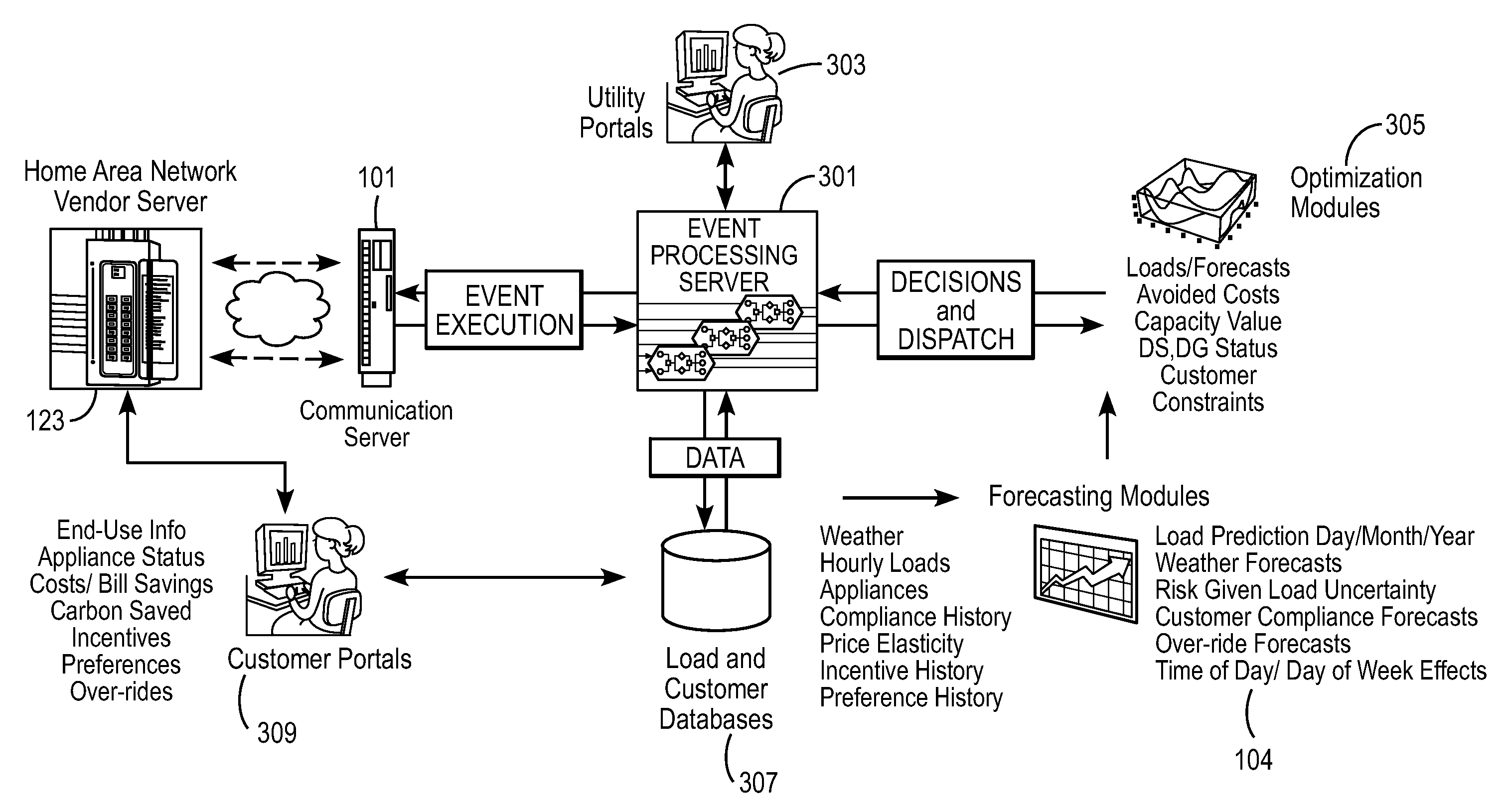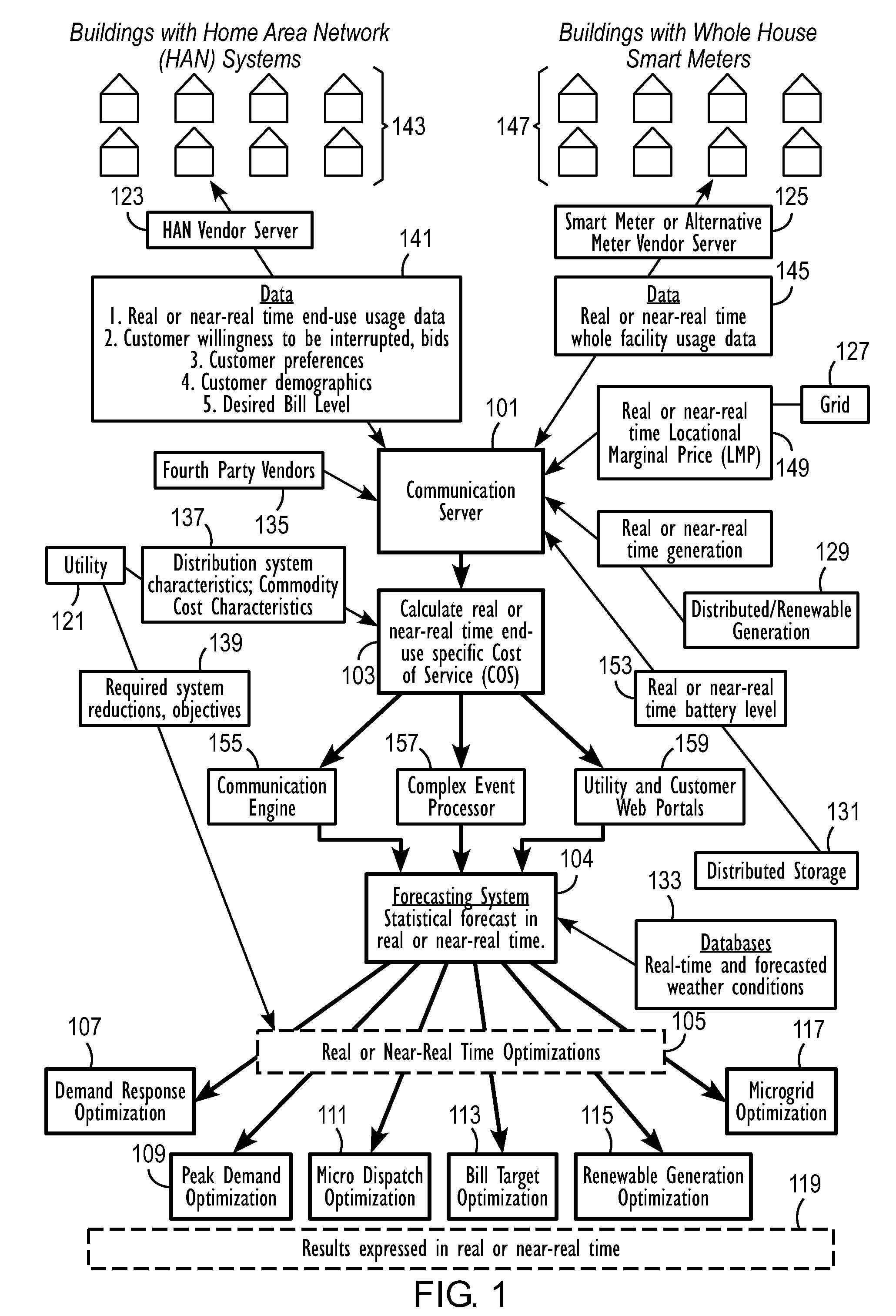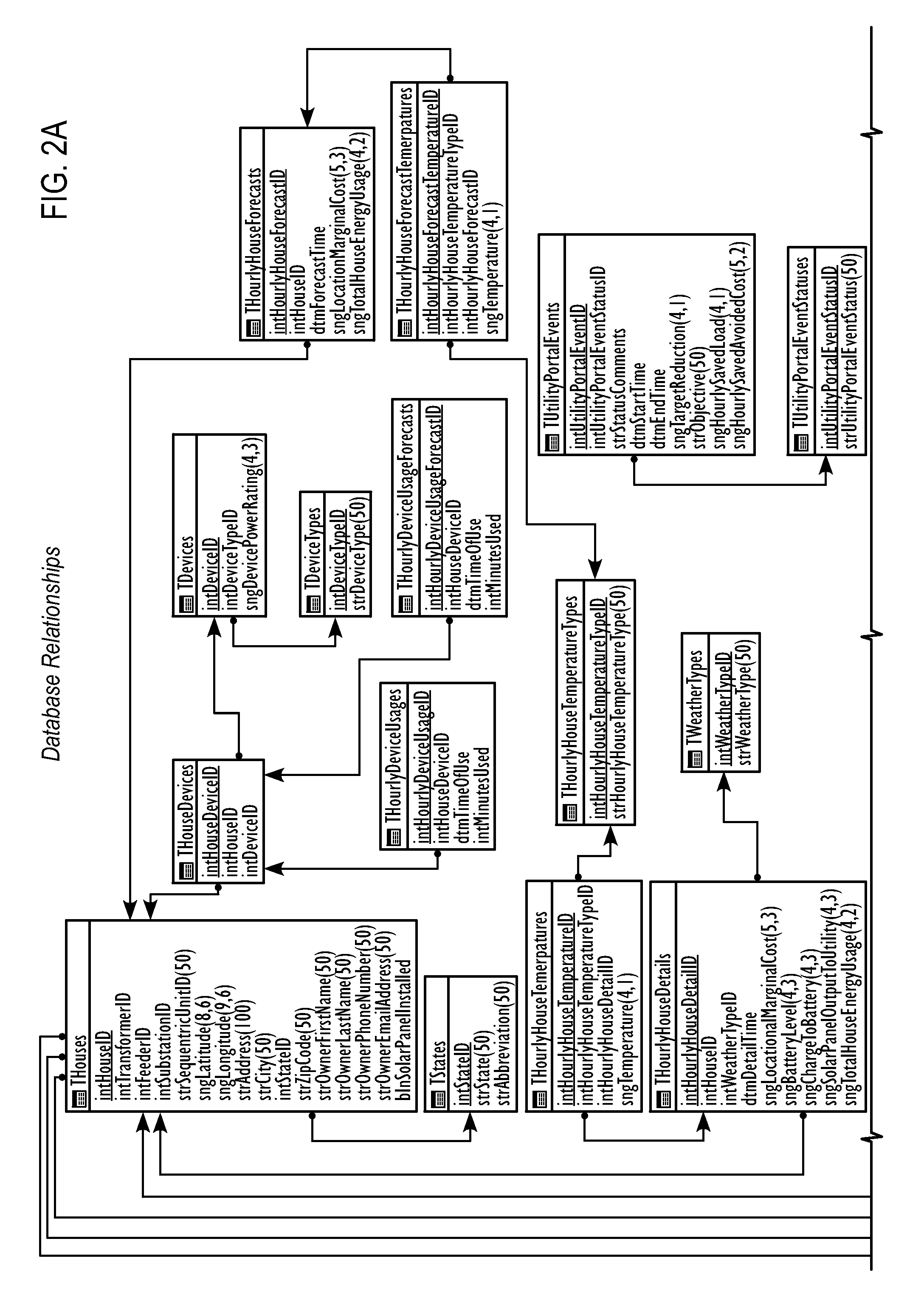Optimization of microgrid energy use and distribution
a micro-grid and energy use technology, applied in the field of micro-grid technology, can solve the problems of not considering the relative cycling schedule of similarly situated homes along the same circuit, not optimizing the relative cycling of customers, and not tying the cycling directly, so as to optimize energy distribution, energy use, the cost of service, and avoid the cost of servi
- Summary
- Abstract
- Description
- Claims
- Application Information
AI Technical Summary
Benefits of technology
Problems solved by technology
Method used
Image
Examples
Embodiment Construction
[0126]The following systems and methods may provide reliable, least cost electricity to households and businesses.
[0127]Embodiments of the present invention may include several aspects. Embodiments may provide a process and method for jointly (1) forecasting, (2) optimizing and (3) costing the management and dispatch of ends uses and energy supply at a (4) micro level in (5) near real time. The confluence of these functions, when combined together and focused at a micro level energy application, in near real time, may provide significant cost savings and efficiencies beyond the traditional utility focus which tends to use aggregated loads, average or non-customer specific costs, and is not able to adjust end use demands in near real time. The micro level is preferably an end-use level, in contrast to a location level.
[0128]First, traditionally, electric energy providers have not managed energy using (1) forecasted loads within a home, at (4) the micro or end-use level. Rather, decis...
PUM
 Login to View More
Login to View More Abstract
Description
Claims
Application Information
 Login to View More
Login to View More - R&D
- Intellectual Property
- Life Sciences
- Materials
- Tech Scout
- Unparalleled Data Quality
- Higher Quality Content
- 60% Fewer Hallucinations
Browse by: Latest US Patents, China's latest patents, Technical Efficacy Thesaurus, Application Domain, Technology Topic, Popular Technical Reports.
© 2025 PatSnap. All rights reserved.Legal|Privacy policy|Modern Slavery Act Transparency Statement|Sitemap|About US| Contact US: help@patsnap.com



